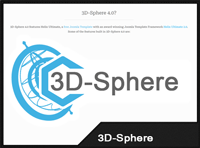
We proudly announce a release of our new series of articles and interviews about the CG industry. This way we show you background of this industry with people and companies that are essential for it. Whole series start with an interview with the Executive Director of The DAVE School and renowned 3D Artist, Steve Warner. In this interview he uncovers what makes the biggest progress in the CG industry according to him or what we can expected in the future and many others interesting information. We would like to thank again Steve for his time on this interview and for more information about DAVE School visit their website: DAVE School
Q: You are the executive director of one of the best CG school. How does one become a director of a prestigious school like DAVE school? How long you are the leading person/you stay in front of DAVE school?
A: I came to the DAVE School in late 2008 to work as the 3D Modeling instructor. About a year in, the founder of the school, Jeff Scheetz, sold the school. He stayed on for a year during the transition of ownership, and then left in October of 2010. Jeff knew that I have a strong background in both 3D and education (having authored books, written magazine articles and created training videos to help aspiring artists), so he recommended me as his replacement. Based on his recommendation, I was able to land the job. I’ve been in the role for about a year now. In that time, I’ve revamped the school’s curriculum, redesigned the school’s website, launched an international ad campaign to boost awareness, and established strategic alliances with studios and organizations like the Visual Effects Society.
Q: What inspires you by your work?
A: I don’t really consider myself to be a fine artist – I’m a commercial artist – so my work tends to reflect the Art Director’s needs more than my personal preference. That said, my background in advertising probably has the biggest influence on my work. I tend to view everything from a product presentation standpoint. That’s different than many artists (especially comic or film artists) who tend to think in terms of scenes and stories. I’m constantly thinking about how the final work is being presented and what it’s communicating.
Q: You have a lot of experience from the world of CG. Where do you see the biggest difference between the CG industry when you started and now?
A: That’s a good question. I created my first computer animation in 1980 and my first videogame in 1981. The graphics were primitive by today’s standards, so one of the largest changes I’ve seen is the quality of computer graphics as a whole. Another major change has been the democratization of graphics hardware and software. I distinctly remember when a high-end graphics “workstation” referred to a $250,000 machine. Now it refers to a $2,500 machine. Similarly, software like Wavefront was only available on expensive workstations. Now, you can put a full featured program like Blender on your laptop for free. The industry has changed as well. Twenty years ago, artists did almost everything “in camera.” Today, everything comes out in passes and is assembled in a dedicated compositing program. And of course, the expectations have changed as well.
If I had to narrow it down to one thing, I’d say the expectations have changed the most. In 1993, the dinosaurs in Jurassic Park awed audiences around the world. It took roughly 3 years to make that film. Now, people expect that same level of quality in episodic television shows. Producers and directors and even the audience themselves are no longer dazzled by the mere presence of computer graphics. They expect it. And they expect it on shorter deadlines and lower budgets.
Q: And what is the biggest difference you see in styles and techniques of modeling and animation? In what you see the biggest progress?
A: In terms of modeling, ZBrush completely changed the industry. ZBrush’s “organic” modeling capabilities changed the entire look of 3D models and it made modeling fun. ZBrush allowed traditional artists to leap into the digital environment. And it freed us from the polygonal boundaries of traditional programs like Maya, Max and LightWave.
In terms of animation, not much has changed because the fundamental principles of animation set forth by the original Disney animators haven’t changed. The tools are a bit different, but the techniques for giving life to an inanimate object are largely the same.
There have been a lot of improvement lately in the area of rigging and motion capture. A site like Mixamo.com and its ability to auto-rig a character is mind blowing. I also think the Microsoft Kinect has the potential to change the way low-budget motion capture is done.
Q: Growing number of 3D movies and 3D effects also increase the demand for 3D artists. What can we expect in the closest future?
A: The demand for 3D and VFX is greater than ever. Unfortunately, the deadlines and budgets are not keeping pace with demand. And so we’re seeing a lot of jobs in the U.S. go overseas. While I fully embrace the open market, outsourcing jobs to India and China does not solve the core problem – namely that of expectations. Moreover, it has spread the problem to other countries. (Those who want a better understanding of the issues can read the Visual Effects Society’s open letter to the entertainment industry at http://www.visualeffectssociety.com/system/files/15/files/open-letter-vfx-industry-may-2011-final.pdf )
While the demand for 3D is increasing, the market is actually shrinking. The global economy has weakened and many long-time animation and VFX studios have closed their doors. It’s harder these days to get a job as a 3D artist. That’s not to say the jobs aren’t out there. But the market is more competitive. Artists wanting to find work in the entertainment industry these days require more than just skills.
